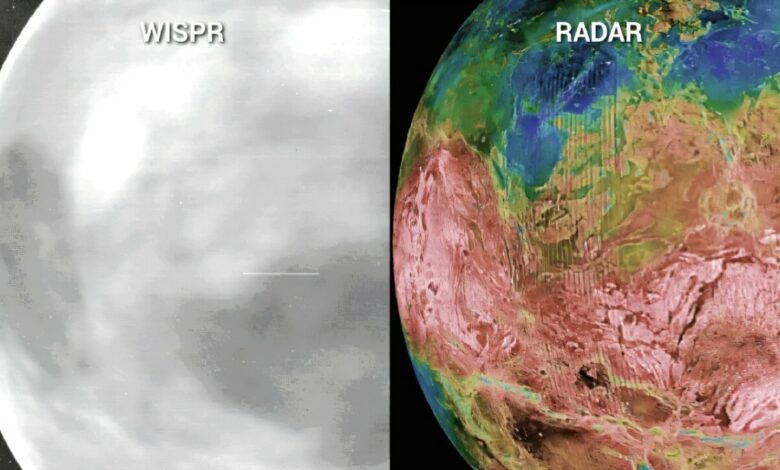NASA’s Parker Solar Probe makes its closest approach to the sun yet.

NASA’s Parker Solar Probe will perform its final gravity assist with Venus on November 6, 2024, skimming just 230 miles (376 km) above the planet’s surface. This close encounter will lead Parker to his final stretch and position him to travel within a record. -breaking 6.86 million kilometers from the sun’s surface on December 24. This approach marks the closest any human-made spacecraft has ever been to the sun, a milestone in space exploration.
An accidental discovery reveals the surface of Venus
According to a recent report by NASA, Parker’s previous Venus flybys yielded unexpected discoveries about the planet. Using the Wide-Field Imager for Parker Solar Probe (WISPR), scientists initially wanted to observe changes in the planet’s thick cloud cover. However, during the third flight on July 11, 2020, WISPR detected near-infrared light coming from the surface of Venus, revealing details behind the clouds. According to Noam Izenberg, a space scientist at the Johns Hopkins Applied Physics Laboratory, the intense surface heat – around 465°C – allowed WISPR’s cameras to capture the hot surface of Venus beneath the thick cloud layers.
These new images of Venus match radar data from NASA’s previous Magellan mission, which mapped the topography of Venus between 1990 and 1994. The similarity in patterns suggests similar landforms, yet WISPR’s images showed unexpected brightness in some areas, raising questions about possible surface differences. This latest flyby is expected to provide additional insights, allowing scientists to determine whether WISPR can identify chemical or physical variations on Venus.
Approaching the inner mysteries of the sun
After the flight in November, Parker Solar Probe will head toward the sun to achieve the main goal of its mission: to observe the solar atmosphere up close. As Parker approaches the Sun’s surface, it will pass through regions filled with solar plasma and possibly within solar eruptions. Adam Szabo, Parker’s project scientist at NASA’s Goddard Space Flight Center, highlights this as a significant feat of engineering, as the spacecraft must endure enormous heat and radiation.
Parker will reach perihelion, or closest solar pass, on December 24. The NASA team will receive a status signal on December 27, confirming the probe’s condition after the mission. Parker’s journey continues, completing two more perihelion passages, but its December 24 orbit will set an unprecedented record for proximity to the Sun, providing unprecedented data about the inner workings of our star.




